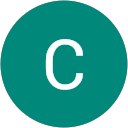
Debunking 5 Common Water Myths: The Truth About Drinking Water Contaminants
Water is essential for life, and access to clean, safe drinking water is a fundamental human right. However, concerns about water quality and the presence of contaminants have led to a flood of information, sometimes conflicting, about what’s in our tap water. Read on as we delve into the truth about drinking water contaminants, dispelling common myths and presenting the facts to help you make informed decisions about your water sources.
Myth #1: Tap Water Is Always Safe to Drink
Fact: While many developed countries have strict regulations governing tap water quality, it’s not a universal guarantee of safety. Aging infrastructure, industrial pollution, and natural contaminants can still affect the quality of tap water. Contaminants in drinking water can also pose significant health risks. According to the Centers for Disease Control and Prevention (CDC), exposure to contaminants in drinking water can lead to various health issues, including gastrointestinal illnesses, developmental problems in children, and even certain types of cancer. Therefore, understanding and addressing these contaminants is crucial for safeguarding your health and well-being.
Tip: Regular water quality testing is essential to ensure that your tap water meets safety standards.
Myth #2: Bottled Water Is Safer Than Tap Water
Fact: Bottled water is not inherently safer than tap water. In fact, some studies have found that bottled water may contain contaminants like microplastics. These tiny plastic particles can leach from the plastic bottles themselves and have been detected in various bottled water brands. When ingested over time, microplastics can potentially pose health risks.
Tip: Using reusable bottles helps reduce the 50 billion plastic water bottles sold in the US every year.
Myth #3: Boiling Water Removes All Contaminants
Fact: Boiling water can kill most harmful bacteria and pathogens, making it safer to drink in emergencies. However, it does not remove chemical contaminants or heavy metals and in some cases, boiling water can even concentrate these contaminants, making the water more toxic. If there are concerns about chemical contaminants or heavy metals in the water supply, additional treatment methods, such as using activated carbon filters or chemical purification, may be necessary to ensure the water’s safety for consumption.
Tip: The CDC recommends boiling water for at least one minute (or three minutes at higher altitudes) to ensure it’s safe to drink.
Myth #4: Filtration Systems Are 100% Effective

Fact: Water filtration systems vary in their effectiveness and the types of contaminants they can remove. For example, basic carbon filters are effective at improving taste and odor by removing common impurities like chlorine, but they are not sufficient to eliminate heavier contaminants such as lead, mercury, or certain chemical pollutants that can be present in your water supply. It’s essential to choose a filtration system based on the specific contaminants present in your water and to regularly replace filters as recommended.
Tip: RO (Reverse Osmosis) systems are typically the best option for removing a wide range of contaminants, including dissolved salts, heavy metals, bacteria, viruses, and certain chemical pollutants, from your drinking water. Learn more about different water filtration systems in this Goettl Homeowner Tip on YouTube:
Myth #5: Water Contaminants Are a Third-World Problem
Fact: Water contamination is a global issue with wide-ranging implications for public health and the environment. While developed countries often boast more robust water treatment infrastructure, they are not immune to challenges. For example, in the United States, much of the water infrastructure is reaching the end of its useful life, with some pipes dating back a century. This aging infrastructure can lead to issues like leaks and water main breaks, potentially introducing contaminants into the water supply.
According to the Environmental Defense Fund, emerging contaminants, including PFAs (per- and polyfluoroalkyl substances), also pose an ongoing challenge worldwide. PFAs—also known as “Forever Chemicals”—are synthetic compounds found all over the environment that don’t break down easily. A recent study found that more than 200 million Americans are exposed to PFAs in their tap water.
Tip: A reverse osmosis water filtration system is the most effective tool for removing PFAs, according to Goettl Master Plumber Gary Eisenhauer. To access information about your public water system, such as system characteristics, sampling data, violations, and enforcement, utilize tools like the EPA’s Safe Drinking Water Information System (SDWIS) Federal Reporting Services.
Safeguarding Our Water Supply
Access to clean, safe drinking water is a vital part of public health, and understanding the truth about water contaminants is crucial. While many myths persist, it’s essential to rely on scientific facts and regularly monitor your water source’s quality. Whether you use tap water, bottled water, or natural sources, being informed and taking appropriate precautions can help ensure that your drinking water is safe for you and your family. Water is life, and it’s our responsibility to safeguard it.
GET SAFER DRINKING WATER IN YOUR HOME
Goettl experts can help you make the switch to a whole-home water purification system. Contact us today to provide you and your loved ones with pure and clean drinking water that’s easy to access. Contact Goettl today for expert advice and professional installation services.
Testimonials
What Our Customers Say About Us
What stood out the most was their attention to detail and genuine care for customer satisfaction. They took the time to assess my system thoroughly, offered honest recommendations, and completed the work efficiently without cutting corners. My home is now noticeably more comfortable, and I feel confident knowing everything was handled by true professionals.
If you’re looking for reliable, top-quality HVAC service, I highly recommend Goettl. They truly live up to their reputation and exceeded my expectations in every way.
Roger came for my rejuvenation appointment. He was very curtious and knowledgeable. I was happy he showed up prompt with great respect to my AC unit and property. I relaly appreciate him and his attention to detail. I would highly recommend him for any of your AC needs.
Jesus Gloria AC service review. He did a great job today and I would highly recommend him for any AC service needs. He was very knowledgeable and courteous. He helped add a surge protector on my outside unit for added protection. I look forward to working with him in the future.
Well, I had some plumbing issues at my residence, and I called "Goettl Plumbing." Great results, too 🤗.
My water wouldn't stay hot, and after contacting Justin at Goettl Plumbing, he sent out Frank, a service technician with over 20 years of plumbing experience. Frank spent a good bit of time studying/ evaluating my plumbing functions, consulted with an on-site Goettl supervisor, and determined my plumbing issues.
After they conferred those issues with Justin, a plan for resolution and payment was determined, and work started the next day.
Greg arrived that morning; accessed the work areas, determined the tools and equipment he needed, and got right to work.
By the end of the day, Greg had installed three (3) Replacement Single Handle Tub/Shower Valves, a Pressure reducing valve, and a Thermal expansion tank with vacuum breaker - - RESULTS: Hot Water 💧
In two days, I witnessed Super Communication, Super Teamwork, and some old-time "1990-1991" Professionalism ... thanks,
"GOETTL Air Conditioning & Plumbing" for A Job Well Done 👏🏼
After note. Cameron came back by a day later to check on readings he wasn't able to get on first appointment. I have high confidence in his work. I'm very likely to work with them again
Brayan and Marcos did an awesome job on the new ac installation. Installed with no issues and has been on ever since. Perfect time with summer coming up. Walked through and job was very clean and organized. Great work ethic. Great guys.
Update - our air conditioner went out today (10/26/23) and JEHAD showed up to repair the issue but the issue was bigger than expected. Tomorrow we will have a brand new system! Goettl is an EPIC firm that treats customers right. Thank you again JEHAD for going above and beyond.
Goettl is the epitome of what excellent customer service is! Our Drain King, DAREAN, addressed all of our questions and concerns and not only unclogged our drain but went above and beyond to show us our drains leading to the street were free and clear of any other issues. Thank you Darean and thank you Goettl for a great experience!
Update: great experience with Edgar Loredo who kept it real with us and was very transparent. I appreciate his honesty and recommendations. Will be requesting him as our technician in the future if we choose to use Goettl
2/15/23
Thank you, Jorge G. Again for being so honest about our unit issues.
Kathy
H. Navarro
Frank Soto, plumber was very thorough in his assessment of the problem. Provided options and was patient in waiting for our decision. We are very pleased with Frank's knowledge plus his warm personality was a plus. Thank you Frank.
H. Navarro
Jeremy Ortega service tech did an excellent job removing, cleaning and reinstalling the flame sensors along with servicing the HVAC blowers. We are set for the next 2 years. Thanks again Jeremy.
H. Navarro
Thank you!
09/19/2024 - Husam Ismail did an outstanding job!!! Very personable and honest, so far with my experience with
Goettl he is the best technician that i have encountered.
02/11/2024 - Josh L. did a fabulous job!!! He was very personable and fast. Great experience, I would recommend Goettl to anyone.
Today is 21 July Sam stopped by and service was excellent 👌. Ralph was excellent, great customer service
Thank you goettl
Explain testing and clarified cost.
I was impressed.
Brayan, Jason, and Christian were the three techs who installed the unit and new ducts. They showed excellent work ethic. They cleaned up all debris, and most importantly, the system works perfectly. Today Ignacio came and inspected the work, and found no problems at all. The entire team has earned 5 stars.
November 6, 2024. The team Brayan, Christian and Jason worked awesome in replacing our whole A/C system and air ducts. They were respectful of our property, answered our questions without hesitation. They all did a fantastic job. We thank ya'll for your services and definitely recommend your business. We appreciate you.
November 7, 2024: Ignacio inspected the newly installed air condition and duct system. He was very knowledgeable, and good expertise. He listened and answered our questions and concerns..he helped us to install our Sensi a/c and heater app..
Fe Alexander
Leticia and Ed Baca
We had an blockage in our sewer line.
Tyler Leija was dispatched the same day, and found the blockage using a camera tool.
He cleared the blockage temporarily.
The actual fix would require digging up and replacing the bad area of pipe.
Paulo "Adrian" Dado and his crew came out the next day with backhoe, dug up the area, and replaced the section of pipe.
The next day, after inspection, Adrian and his crew filled in the hole and then cleaned up the area.
This is a brief description. There was A LOT of work involved.
Very professional work.
Our tech Jorge that came out the day before helped quickly assess the situation and get us set up for a new system and water heater. Jorge was very friendly, would highly recommend!
Frank did an excellent job at explaining every thing in terms that were understandable to both myself and my wife. This greatly assisted in making the right decision to look at all options on either repair or update/purchase for the future and in the long term, saving money.
Will definitely call and use
Goettle again and I will ask if Darrean could help again.
Couldn’t be happier. Came all the options




































































































































































































